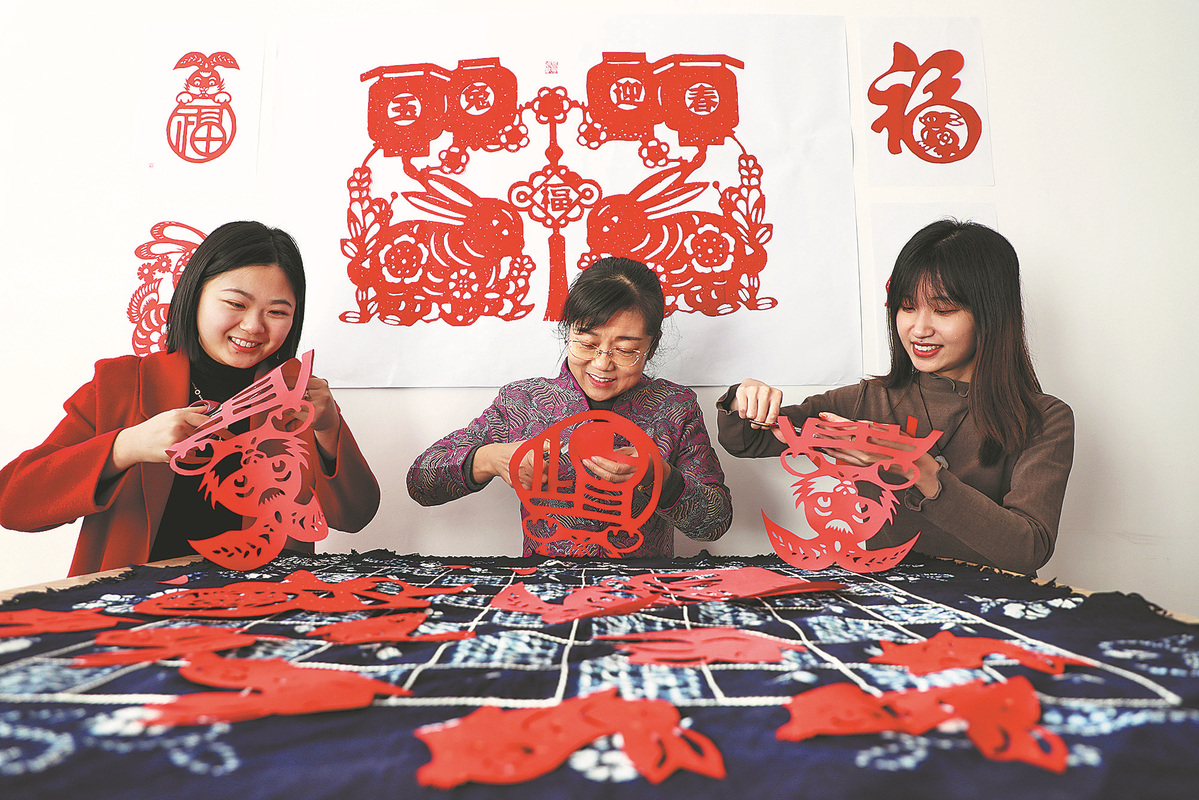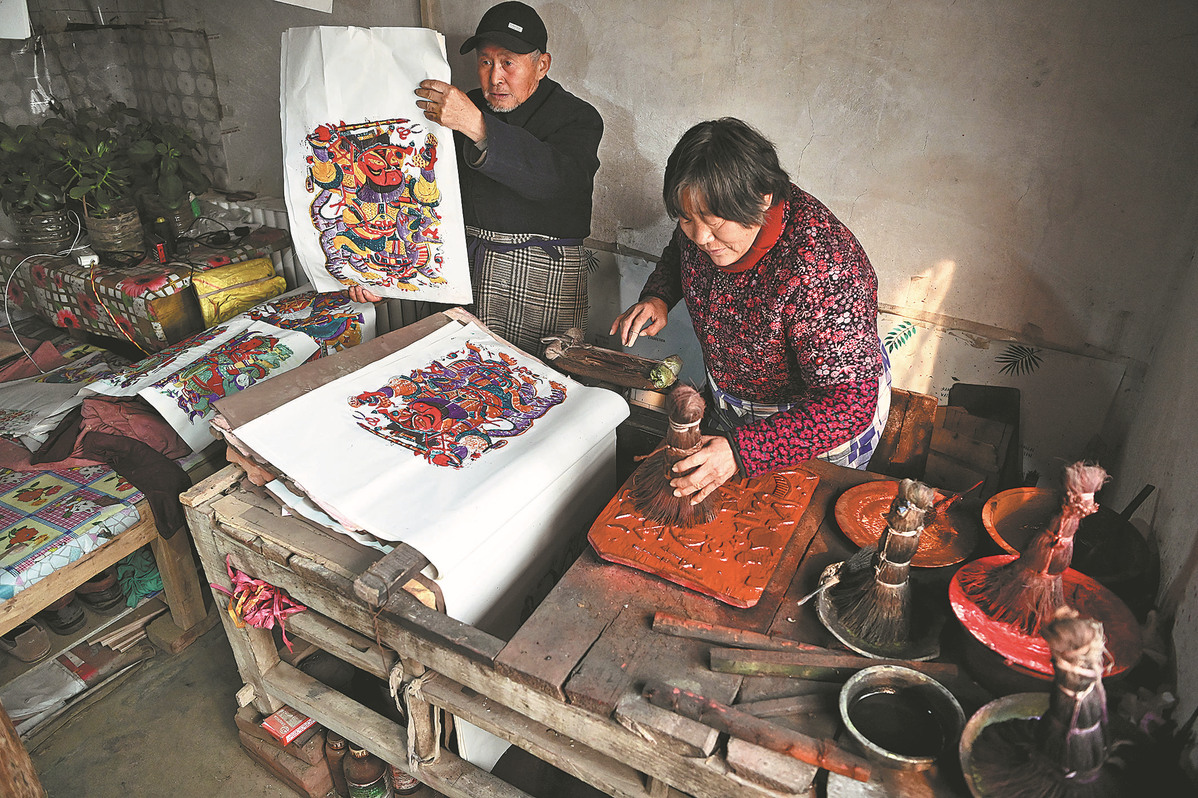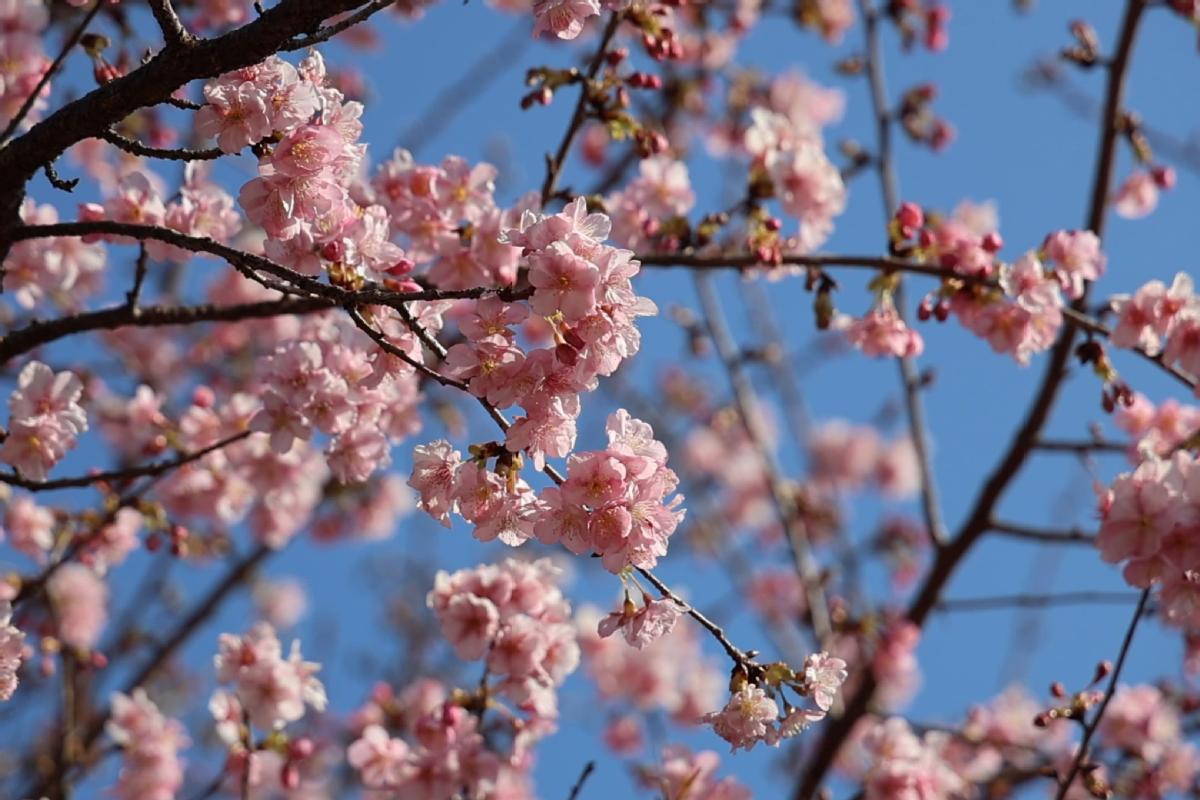With innovation, young inheritors see future for traditional arts


Tian Sheng, an inheritor of the tradition of Jiaonan New Year prints, was pleased to find himself surrounded by young visitors admiring his exquisite creations at a recent exhibition.
"In recent years, we have incorporated some of the elements of Jiaonan New Year prints in our products, and they have become instant hits," he said, picking up a porcelain tea set decorated with vivid scenes of planting and harvesting.
The exhibition was held at China's first annual conference on the protection of intangible cultural heritage, which wrapped up in Xi'an, capital of Shaanxi province, last week.
As an example of municipal-level intangible cultural heritage from Qingdao, Shandong province, Jiaonan New Year prints incorporate the features of traditional Chinese New Year paintings with the artistic touch of Gongbi paintings and paper cutting.
The elements all come together to create vibrant art populated with flamboyant figures, and the distinctive style is appreciated for its elegance.
"Intangible cultural heritage can best be appreciated and passed down to future generations only if it integrates modern aesthetics and is suited to today's life," Tian said.

According to Chai Zhanzhu, an inheritor of jiaotai ci, or "twisted clay porcelain", the vitality of intangible cultural heritage lies in innovation.
Jiaotai ci is listed as a national-level intangible cultural heritage. It is made by using porcelain of two or more colors and is known for its delicate twisting and firing techniques. Once lost, the technique was retrieved through the efforts of skilled craftsmen and scholars.
"Innovation is our focus in carrying forward the technique," Chai said. "In the past, the art was mostly used to create feather and chrysanthemum patterns. Now, landscapes, figures, flowers and birds can also be twisted into finished pieces."
Chai and his fellow craftsmen are also working with universities to improve both the clay used and the techniques to glaze it, and have registered a number of patents.
He said that his village now has six companies, one professional cooperative and 20 family workshops engaged in the production, processing, sale and research into the tradition, and sells around 300,000 pieces a year, and more young artisans are learning traditional skills and reaching larger audiences with their art.
Born into a family of potters in Shanxi province, Qiao Lin returned to her hometown to produce fahua, a kind of glazed porcelain, after studying in the United States
"When I saw the enthusiasm people in the US had for fahua work, I thought about passing on the skill and even invigorating it," she said.
Qiao has been exploring new designs including innovations in color glazing, and her pieces are particularly popular with young people.
In central China's Henan province, 32-year-old Chang Yangyang is a papercut artist and a vlogger with over 340,000 followers on Douyin, the Chinese version of TikTok.
"Social media has created a bridge between young people and the traditional culture in which they have an interest," Chang said.
Apart from livestreaming himself making papercuts, Chang also sells papercuts online, with pieces depicting everything from traditional Chinese customs to international soccer stars.
"This precious folk art of paper cutting should not be allowed to fade away from modern life. I hope to show the art to more young people and instill a love of paper cutting, and further promote the art," he said.
Xinhua
- Space schedule opens with two launches
- Winter cherry blossoms create unexpected spectacles
- Chongqing park becomes stage for captivating natural phenomenon
- Chongqing's cat theme park draws visitors, aids rescues
- Winter fishing season brings fresh catches at Hunan's Liuye Lake
- Former Guizhou official gets 11-year sentence for bribery





































